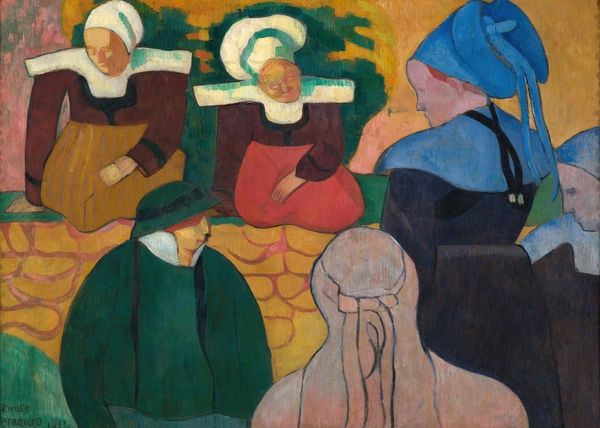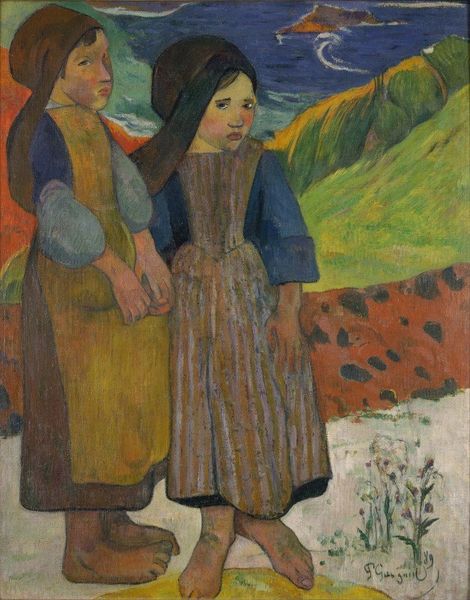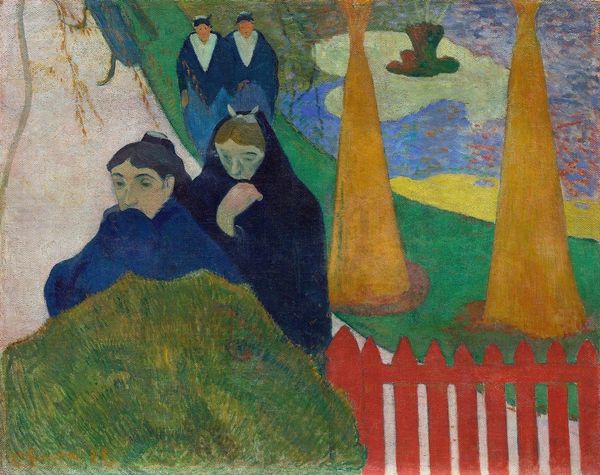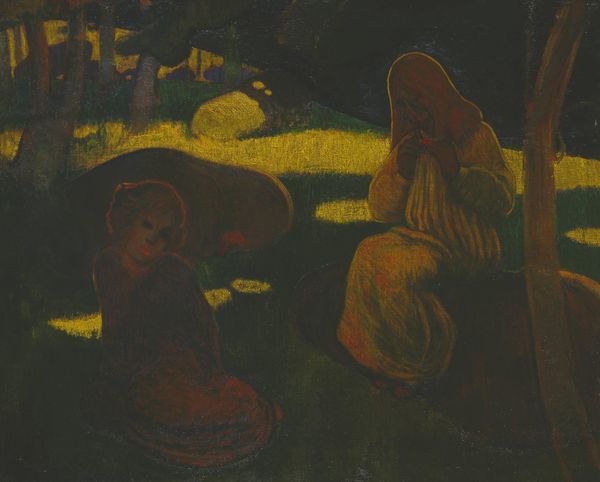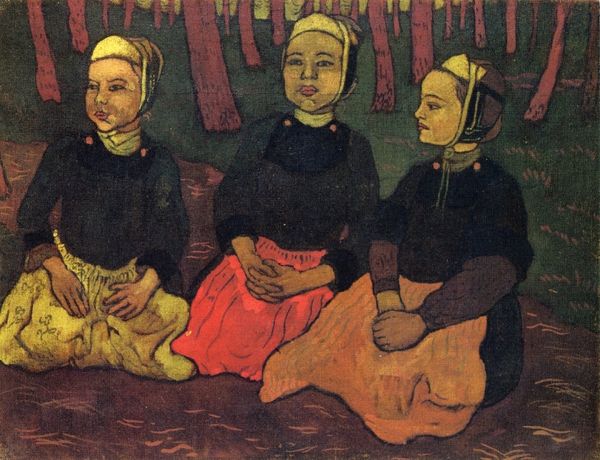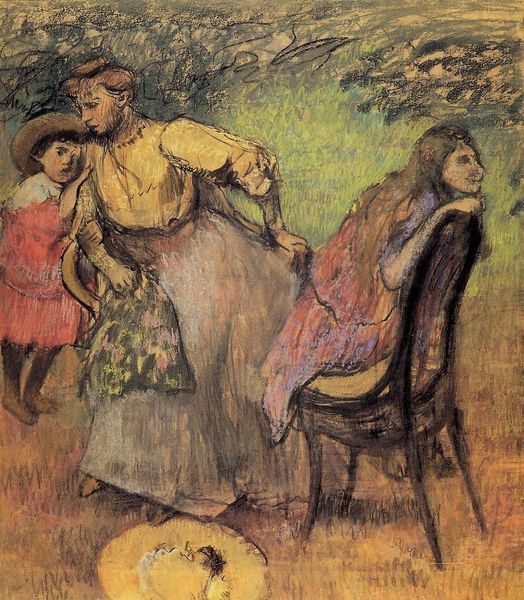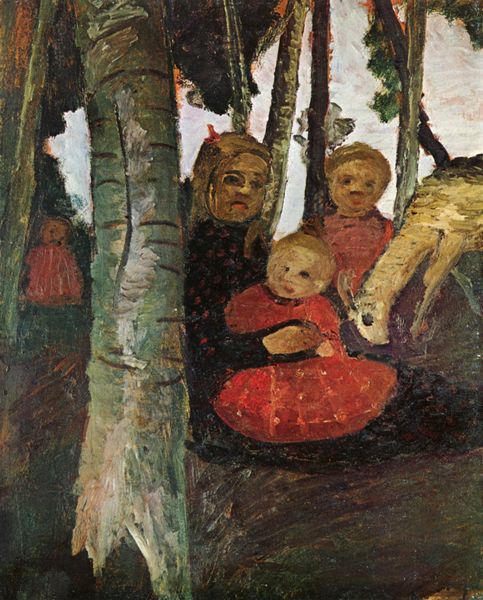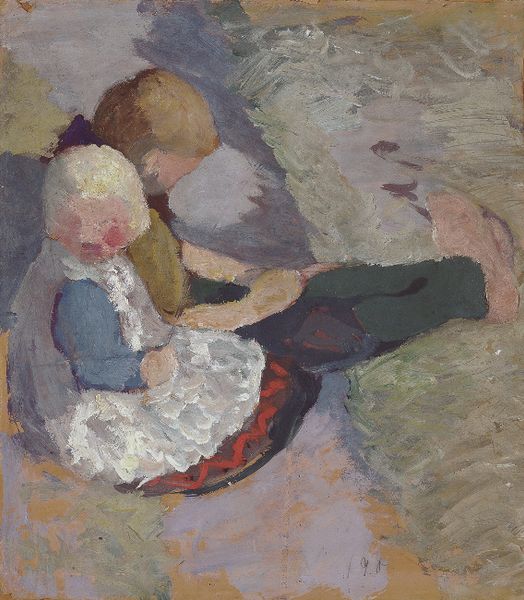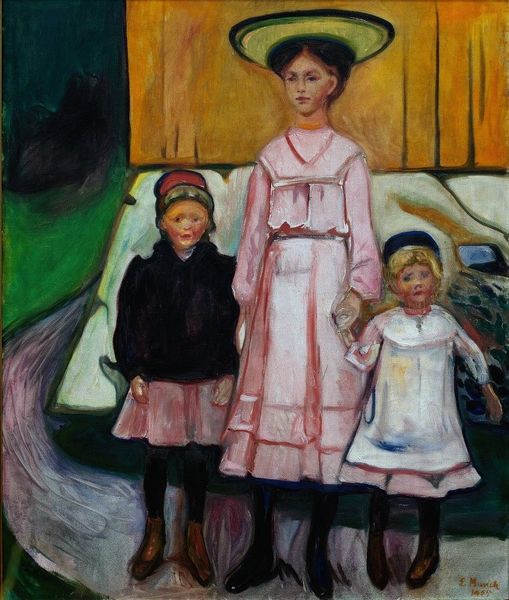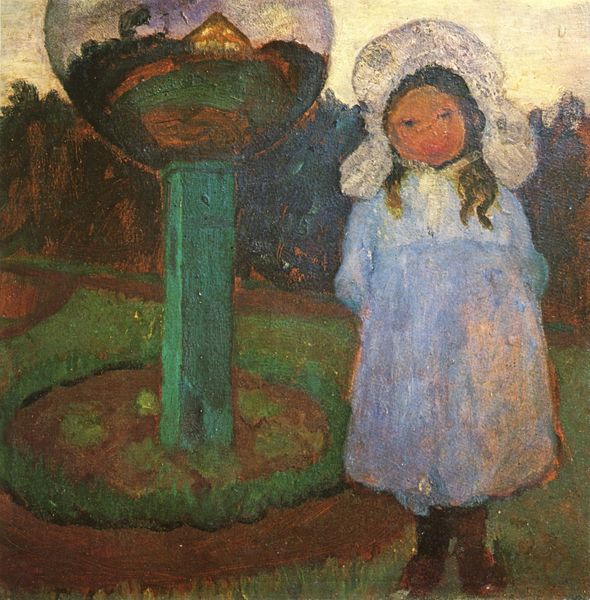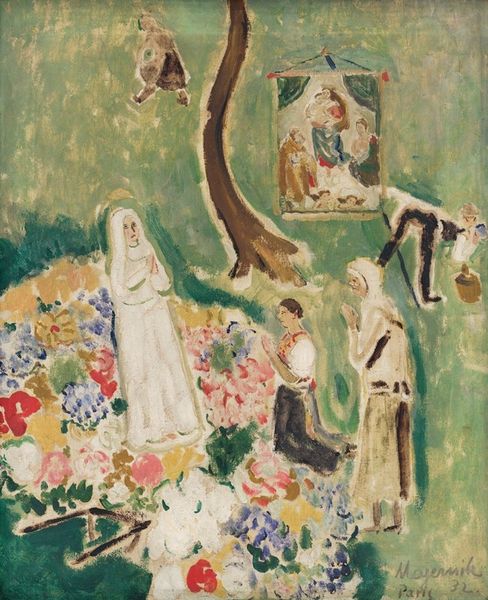
painting, oil-paint, impasto
#
portrait
#
painting
#
oil-paint
#
landscape
#
figuration
#
oil painting
#
impasto
#
group-portraits
#
post-impressionism
Dimensions: 33.5 x 25.5 cm
Copyright: Public domain
Curator: Welcome. Here we have Maurice Denis’s “Bretons,” painted in 1890. This oil painting, currently in a private collection, presents a group portrait set within a landscape. Editor: My first thought? This scene has a somber feel, yet there's an underlying sense of solidity and purpose in these women. The colors, though muted, have a luminous quality—especially those creamy, glowing bonnets. Curator: The painting very much reflects Denis’s interest in capturing regional life, in this case in Brittany, France. It is an interesting portrayal, particularly since at this point in time Breton culture was starting to become mythologized as purely archaic and separate from Parisian modernity. This, however, is something that Breton writers and artists were rallying against and resisting, including artists like Denis. Editor: It’s almost like they’re caught between worlds, isn't it? Those weighty figures against the landscape create a world between dream and observation. There's something elemental and haunting about their stillness, too, as if they're part of the earth itself. Are they portraits, exactly, or something more symbolic? Curator: Precisely! Denis was a key figure in the Symbolist movement and one of the founding members of the Nabis. He was famously quoted as saying, "Remember that a picture – before being a battle horse, a female nude, or some anecdote – is essentially a flat surface covered with colours assembled in a certain order." I find it so fascinating how this quote challenges conventional understanding by foregrounding the aesthetic, constructive qualities above narrative meaning, particularly during a period of shifting modernisms. Editor: Which makes you wonder, doesn’t it? What meaning lies beyond that "flat surface?" It is almost an incantation. To me, there is this strange, magnetic power about how simply Denis uses shapes and colors. It’s the mood, ultimately—a feeling of something sacred. Curator: Absolutely. This painting embodies much of what the Nabis were pursuing – an exploration of personal symbolism through simplified forms. The simplification and somewhat flattened space give it that iconic, almost mystical character. Editor: I am glad that Denis was able to give us this glimpse and these memories of such women's strength, even the oxen share their powerful grace! Curator: Thank you. I feel this art, for all of its symbolism, roots us in an understanding of culture through image. Editor: Beautiful. I agree.
Comments
No comments
Be the first to comment and join the conversation on the ultimate creative platform.
